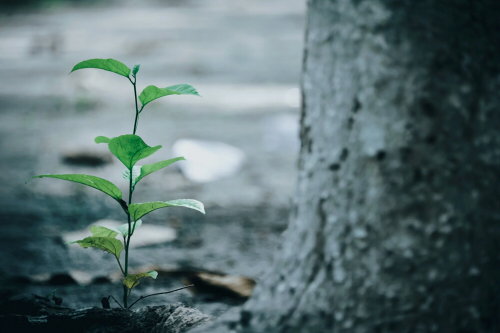Is That Design Biodegradable? It’s Complicated
Elizabeth Segran
If you order takeout from an eco-friendly restaurant, you might find your meal accompanied by compostable plastic cutlery. Some fashion brands now deliver your clothes in clear biodegradable plastic packaging. And if you’re out shopping on the High Street in the United Kingdom, there’s a good chance purchases will be put in a compostable plastic bag. But experts caution that we shouldn’t think of plant-based and biodegradable plastic as a silver bullet until more research is done.
Every year, 300 million tons of plastic is produced globally, and most is made from oil and other fossil fuels. Only 10% of it is recycled. Since the vast majority of plastic is not biodegradable, it sits in our landfills for hundreds of years. Some of it gets washed into the ocean, where animals mistake it for food. It can break into tiny fragments called microplastics, which end up in our water, food, and rain.
In the midst of all of this bad news, bioplastics – which are derived from plants and can be designed to be biodegradable – offer some hope. Many big brands are eagerly exploring the possibilities of switching to bioplastics: Lego has been experimenting with various plant-based plastics. Ikea announced it would team up with industrial manufacturer Neste to introduce bioplastics into its supply chain. Allbirds now makes its EVA foam soles out of sustainably-sourced sugarcane. Fashion brands are so eagerly adopting bioplastics that analysts at Global Market Insights say that the bioplastic textile market will reach $1.4 billion by 2025.
But experts say we need to study and standardize biodegradable, compostable, and bio-based plastics if they’re to live up to their potential. That’s the aim of a new effort by the U.K. government, which launched this summer and wraps up later this month. The open call is a request for research on these emerging materials, from how long they take to biodegrade to the environmental footprint of manufacturing them. The government is concerned that in “the absence of agreed standards and/or due to shortcomings in those that do exist, that claims about the biodegradability of plastic-based products cannot be verified. This may lead to further confusion in the marketplace; increased levels of consumption; and even environmental harm at, and after, plastics are disposed of if left unchecked.”

In short: We need to agree upon a definition for terms like “bioplastics,” “compostable,” and “biodegradable,” and what’s more, we need a system for verifying that those terms are being accurately used by companies that make them.
Researchers recently found that the compostable plastic bags popular with U.K. retailers were perfectly usable three years after being buried in dirt.
As my colleague Adele Peters recently reported, these new materials can be difficult for recycling and composting companies to handle. Some plastics described as compostable don’t actually break down in the garden, landfill, or ocean. Instead, they only decompose under particular conditions, including temperatures of 55-70 degrees Celsius (131-158 degrees Fahrenheit) along with high levels of humidity and oxygen. Industrial composters can create these conditions, but if the compostable plastics end up in the regular waste stream, they will not break down. The U.K. government is also concerned that when biodegradable plastic does break down, it could introduce toxins and microplastics to the soil.
Meanwhile, some bioplastics have the same polymer structure as plastics made from fossil fuels, which means they won’t biodegrade at all. Their main benefit is that they’re manufactured from renewable, rather than nonrenewable, resources. But relying on plants to create plastics has its own problems, and the U.K. is looking for research that addresses “whether the feedstocks for such products, including land use and any resources required to produce them, could be more effectively used for other purposes, such as food production.”
These emerging materials have already sparked debate within the design community. Arthur Huang, founder and CEO of circular-economy engineering company Miniwiz, has argued that switching to plastics made from plants could have a devastating environmental cost when you consider how much farmland would be required to produce these plants. Even if we got to the point where all bioplastics could be effectively composted, Huang told Dezeen earlier this year, the process of composting bioplastics could potentially make the soil and the earth more acidic, polluting both the land and the oceans. Architect Arthur Mamou-Mani disputed his claim, saying tests found that these composted plastics did not increase the acidity of the earth.
Whatever the case, the switch to biodegradable and compostable plastics will not be simple. So what can we do in the meantime? For one thing, experts say we should certainly use recycled plastic instead of virgin plastic, since this does not require new raw materials (whether oil or plants). But we should also focus on curbing our dependence on plastic and switch to organic materials such as sustainably sourced wood, bamboo, or recycled aluminum. We might take inspiration from the artisans and designers of the ancient world, who created beautiful, functional products thousands of years before plastics were invented.








